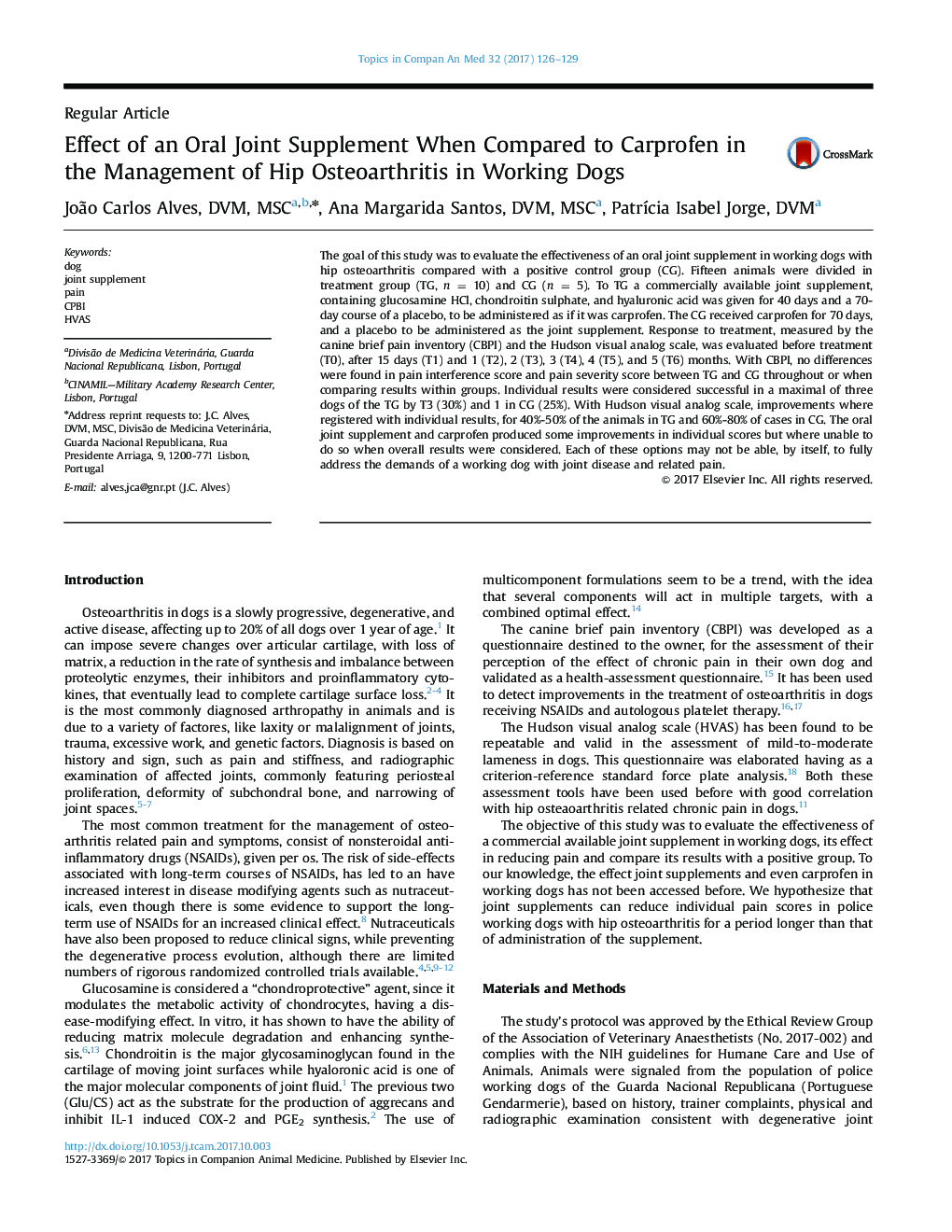| Article ID | Journal | Published Year | Pages | File Type |
|---|---|---|---|---|
| 8485014 | Topics in Companion Animal Medicine | 2017 | 4 Pages |
Abstract
The goal of this study was to evaluate the effectiveness of an oral joint supplement in working dogs with hip osteoarthritis compared with a positive control group (CG). Fifteen animals were divided in treatment group (TG, n = 10) and CG (n = 5). To TG a commercially available joint supplement, containing glucosamine HCl, chondroitin sulphate, and hyaluronic acid was given for 40 days and a 70-day course of a placebo, to be administered as if it was carprofen. The CG received carprofen for 70 days, and a placebo to be administered as the joint supplement. Response to treatment, measured by the canine brief pain inventory (CBPI) and the Hudson visual analog scale, was evaluated before treatment (T0), after 15 days (T1) and 1 (T2), 2 (T3), 3 (T4), 4 (T5), and 5 (T6) months. With CBPI, no differences were found in pain interference score and pain severity score between TG and CG throughout or when comparing results within groups. Individual results were considered successful in a maximal of three dogs of the TG by T3 (30%) and 1 in CG (25%). With Hudson visual analog scale, improvements where registered with individual results, for 40%-50% of the animals in TG and 60%-80% of cases in CG. The oral joint supplement and carprofen produced some improvements in individual scores but where unable to do so when overall results were considered. Each of these options may not be able, by itself, to fully address the demands of a working dog with joint disease and related pain.
Related Topics
Life Sciences
Agricultural and Biological Sciences
Animal Science and Zoology
Authors
João Carlos DVM, MSC, Ana Margarida DVM, MSC, PatrÃcia Isabel DVM,
